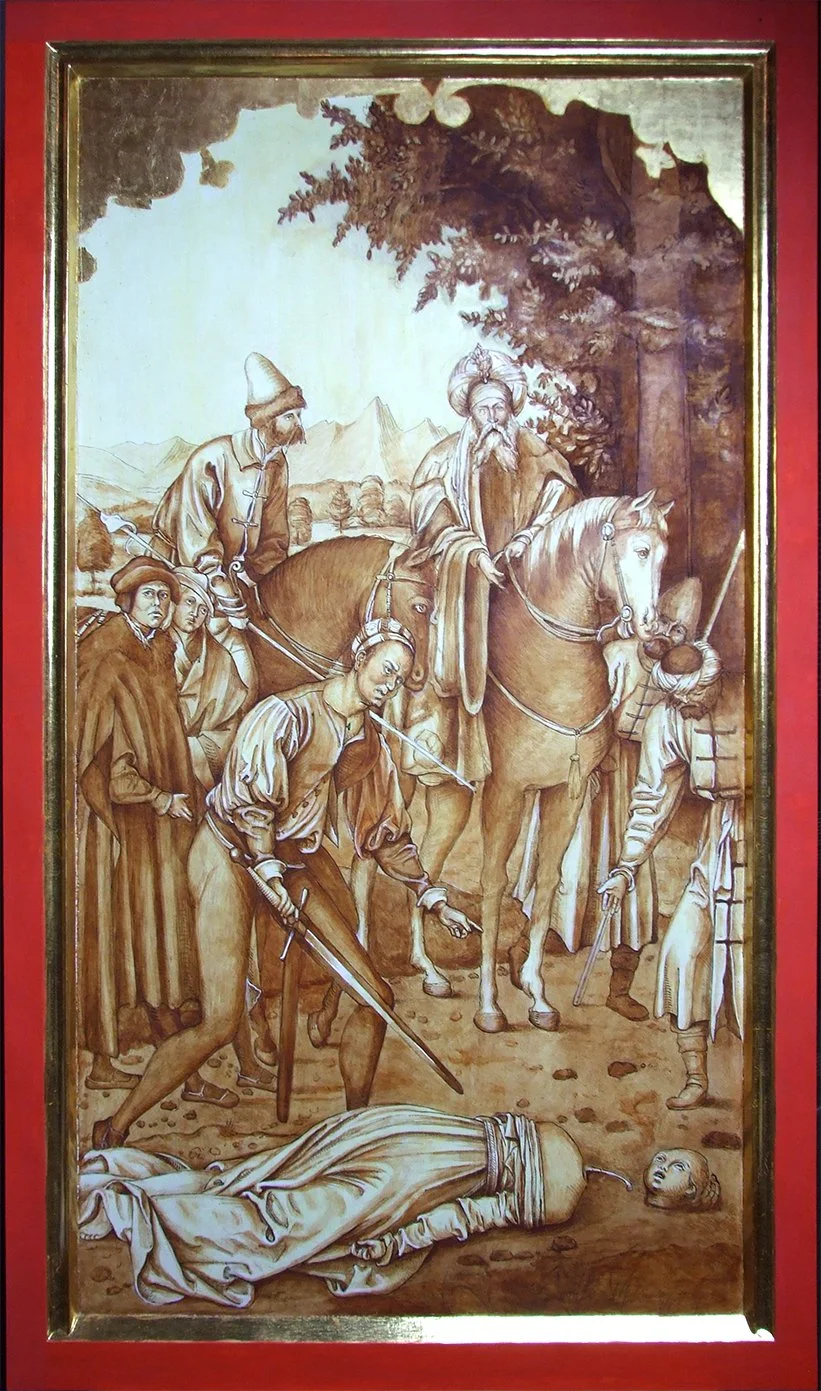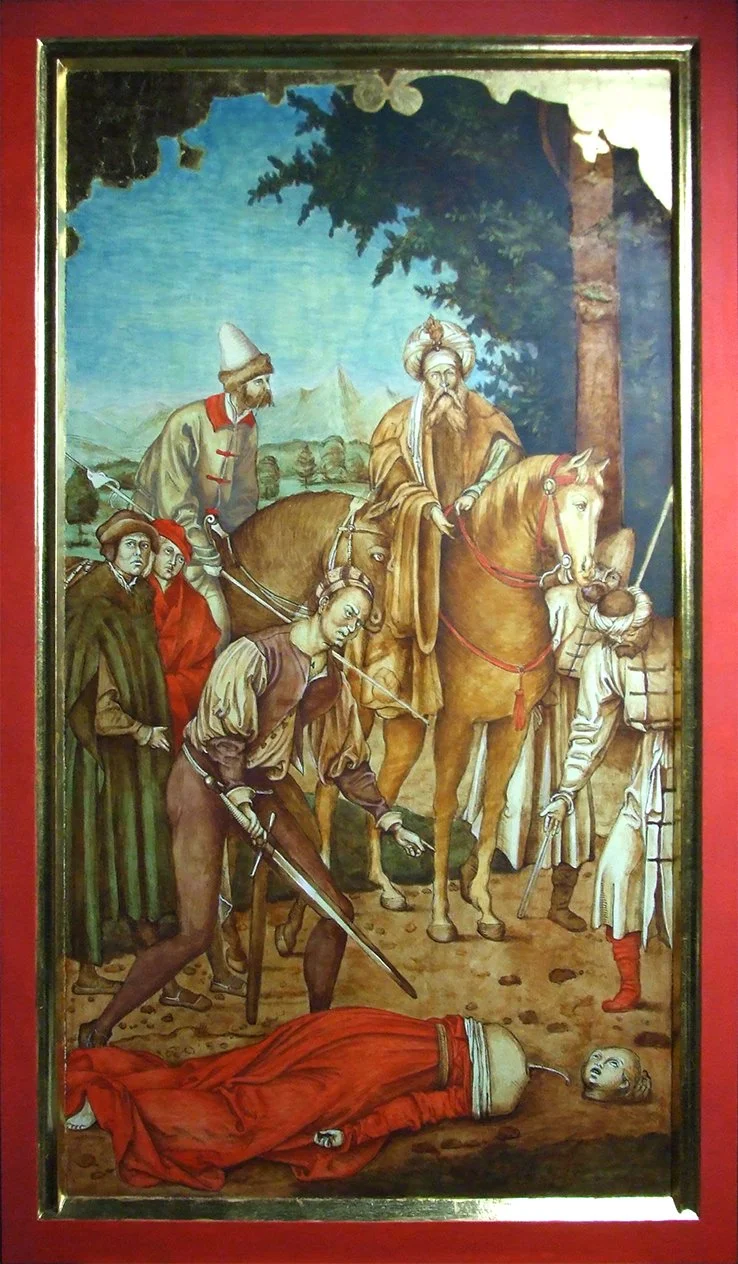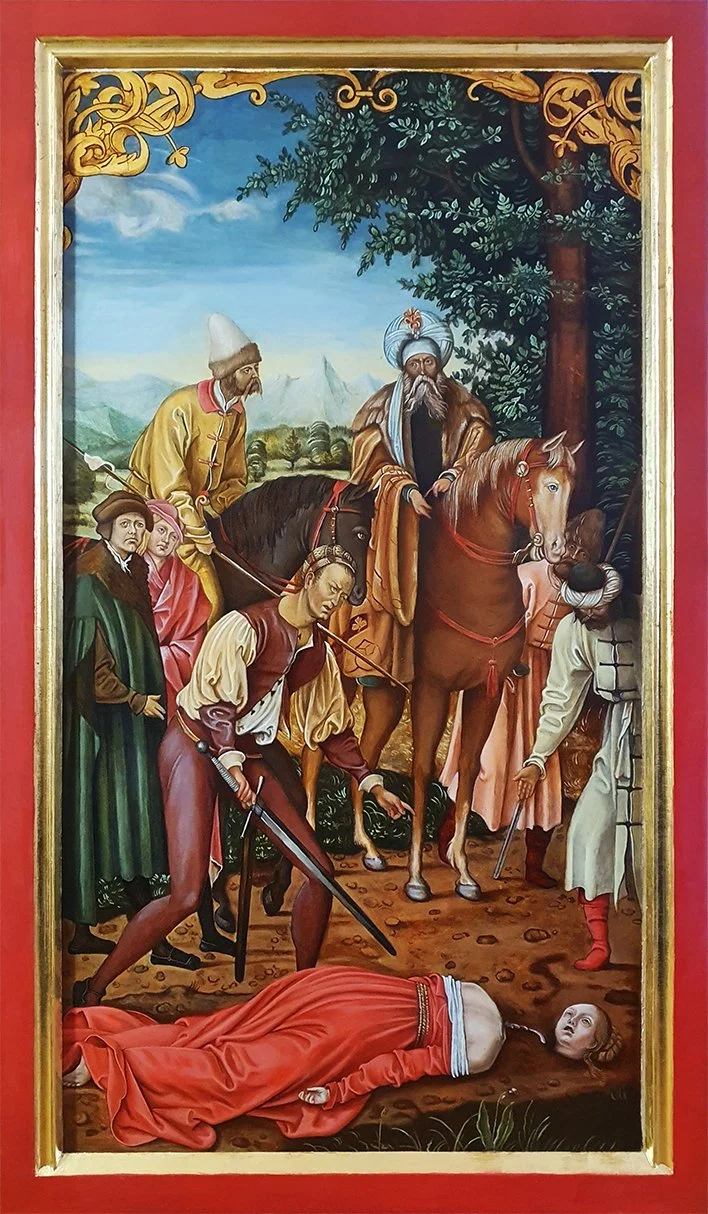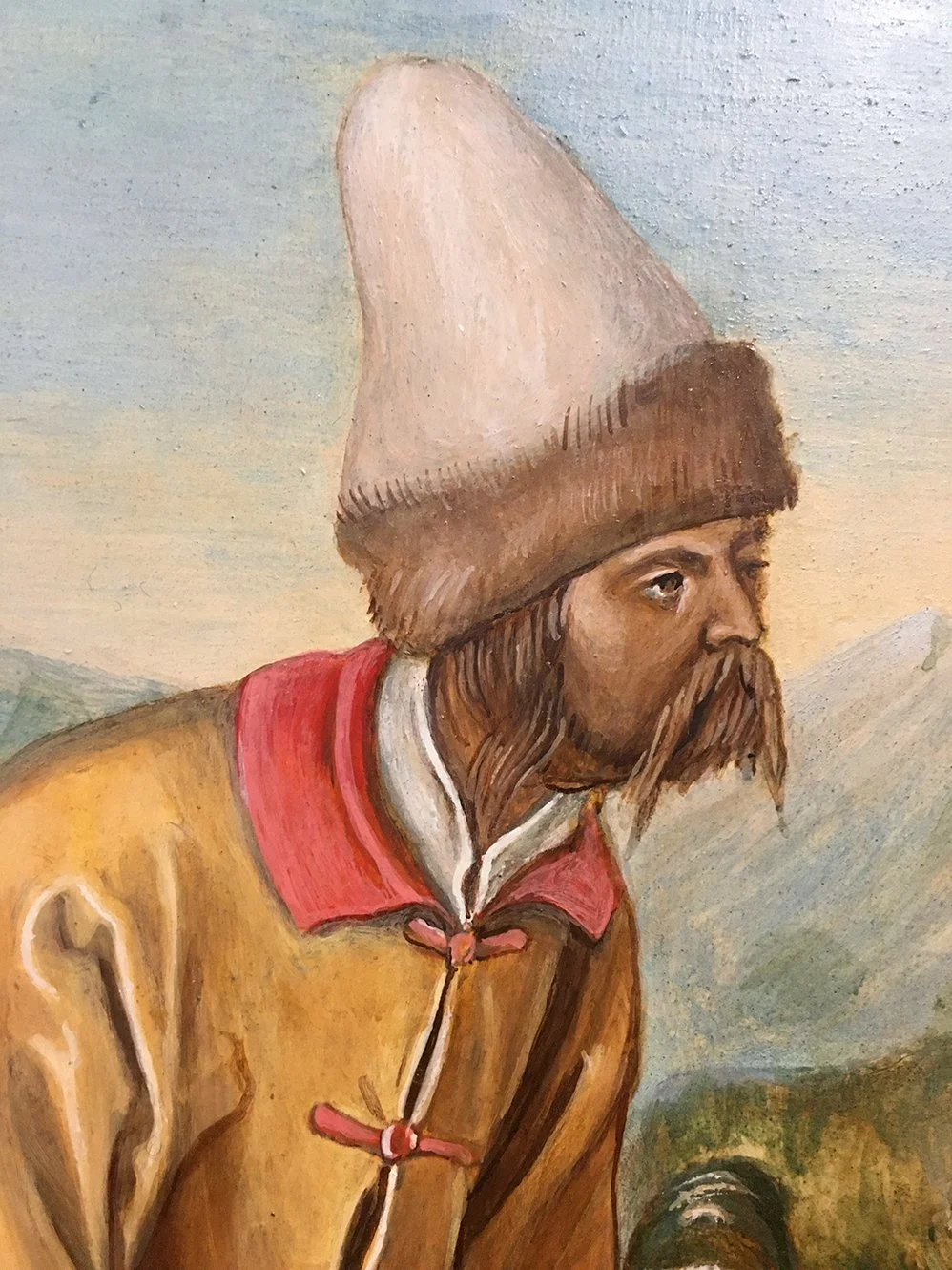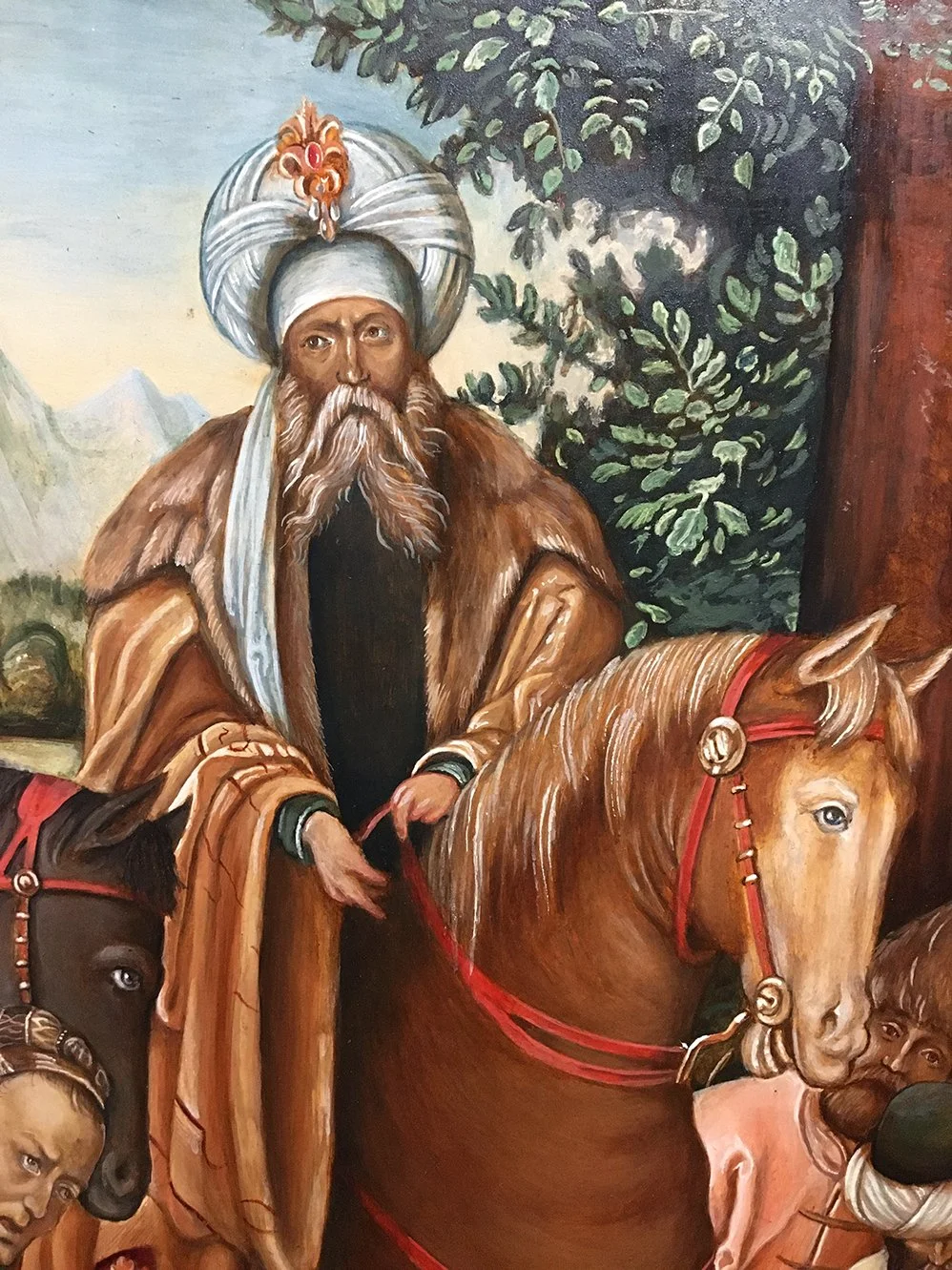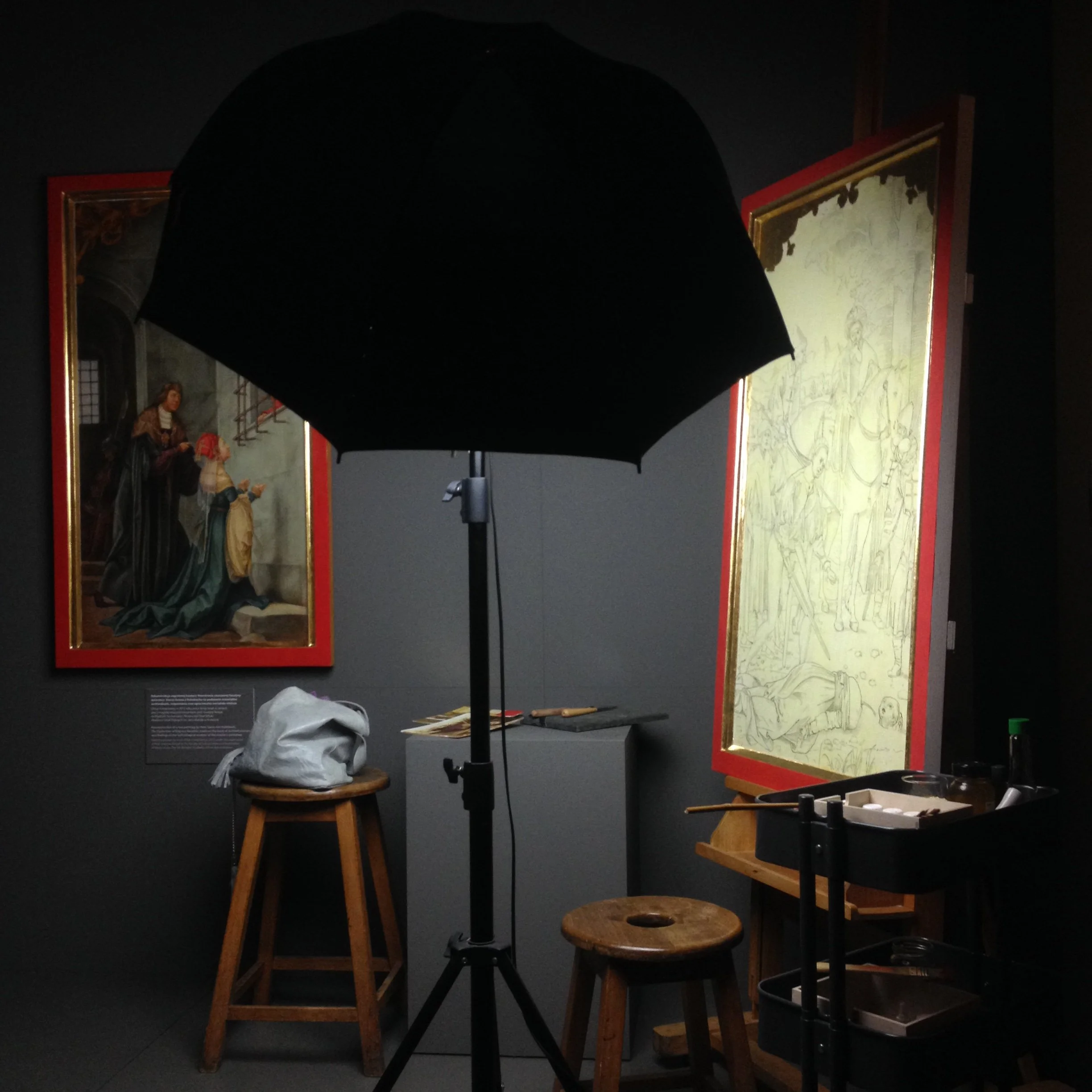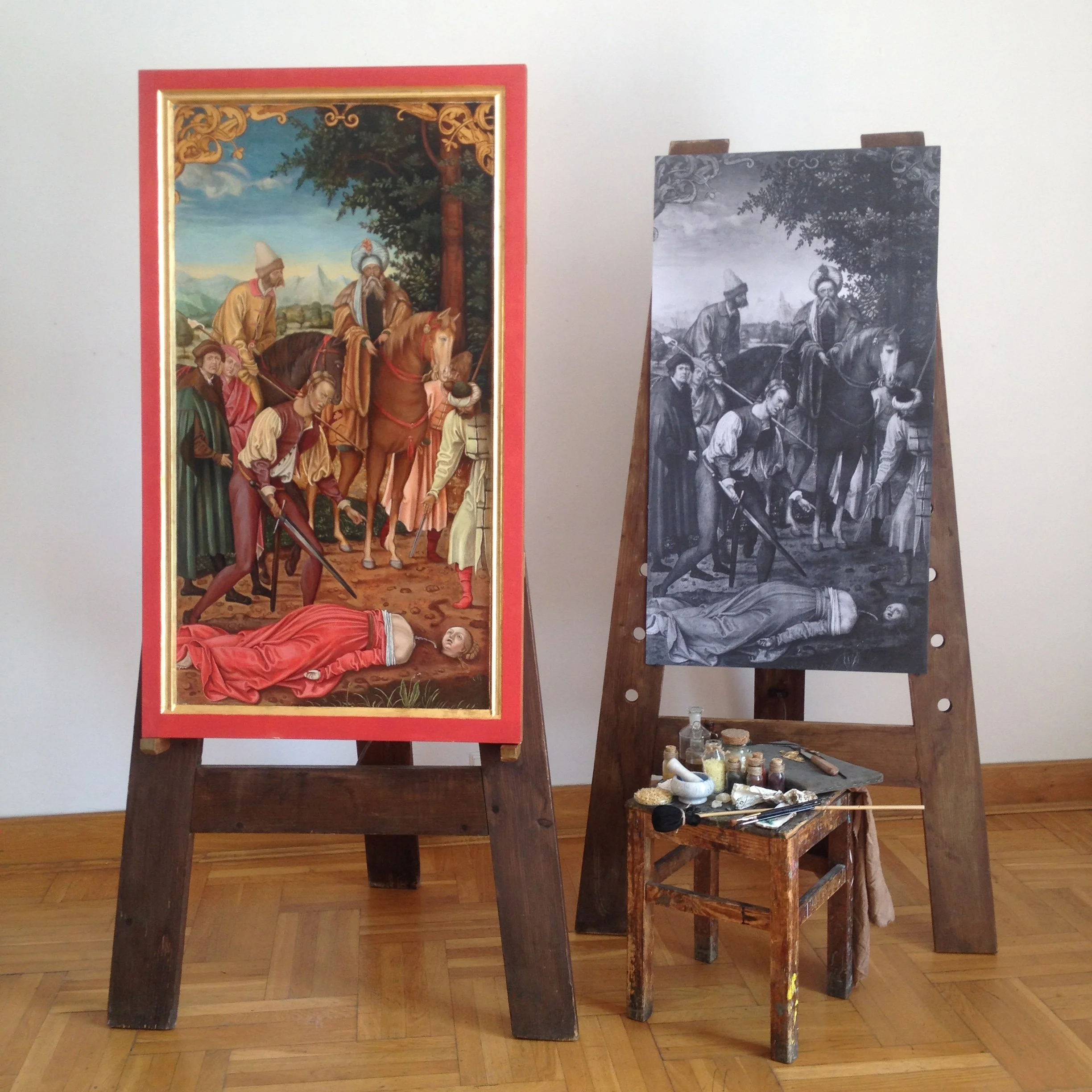
RECONSTRUCTION OF THE "BEHEADING OF ST. CATHERINE OF ALEXANDRIA" BY HANS VON KULMBACH
The reconstruction of “The Beheading of St. Catherine”, a lost section of a cycle by Hans Süß of Kulmbach, in the context of artworks stolen during World War II, was the central topic of my master’s thesis, completed in 2018/2019 under the supervision of Prof. Grażyna Korpal at the Academy of Fine Arts in Cracow. This missing painting is part of an eight-piece cycle dedicated to Saint Catherine of Alexandria, of which six survived the war, while two were lost.
The primary objective of my dissertation was to reconstruct “The Beheading of St. Catherine”, maintaining stylistic and historical accuracy in relation to the surviving works from the cycle. During this process, I relied on conservation documentation from the preserved paintings, along with extensive historical research. Additionally, I actively participated in the exhibition “The Master and Catherine: Hans von Kulmbach and His Works for Kraków”, held at the National Museum in Kraków from September 27, 2018, to January 27, 2019. My research was further informed by literature on Süß and his contemporaries, as well as an analysis of photographs of their paintings.
The composition of the missing work was preserved in black-and-white archival photographs, while the color scheme was reconstructed using pre-war iconographic descriptions and Jan Matejko’s watercolor sketches. Following the principle of analogy, I aimed to ensure consistency with the remaining paintings in the cycle.
Additionally, my research explored various expert analytical methods, which provided valuable insights into elements such as anatomical details and brushwork techniques. The experience of Anna Smyk, who had previously reconstructed the other lost panel from the cycle, served as an important reference. However, I conducted my own independent research and practical trials, expanding the range of source materials.
The reconstruction process adhered to historical 16th-century techniques. I used pigments produced according to historical recipes, including lead white, tin-lead yellow, kraplak and azurite. The painting was executed using the egg tempera technique, with oil-resin glazes applied as a finishing layer.
Reconstructing the painting was both challenging and highly instructive. Even the most meticulously executed copy inevitably reflects the individuality of the copyist—an issue that becomes even more significant in the reconstruction of a lost artwork. Nonetheless, my primary goal was to ensure that the painting remained as faithful as possible to the original style, technique, and color palette of the cycle. Ultimately, it is up to the viewer to judge the extent to which this reconstruction has succeeded.
The theoretical section of my dissertation explores the broader issue of art theft during World War II and the restitution process. The loss of cultural heritage remains a significant yet often overlooked consequence of war, and both the history and visual identity of lost artworks deserve greater public awareness. This project was undertaken with that objective in mind—by reconstructing the painting, I hoped to reintroduce it to a wider audience, shedding light on the magnitude of cultural losses suffered by Poland as a result of war.
THE STAGES OF RECONSTRUCTION:
B&W pre-WWII photograph of the lost painting.
Wooden panel made from three linden planks with strips of flax tow glued on top.
The layer of ground: rabbit glue mixed with chalk.
Underdrawing made with ink on top of a layer of yellow imprimatur.
Monochromatic underpainting.
First layers of colors.
Finished reconstruction.
THE FRAGMENTS OF FINISHED RECONSTRUCTION:
THE OTHER ORIGINAL PAINTINGS FROM THE CYCLE, THAT SURVIVED THE WORLD WAR II:
The original paintings from the cycle.
The "Master and Catherine" exhibition - on the left a reconstrucion made by Anna Smyk, on the right my reconstruction after the underdrawing layer.
My reconstruction during the exhibiotion of the chosen master thesis at the Palace of Fine Arts in Cracow.




